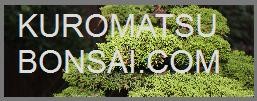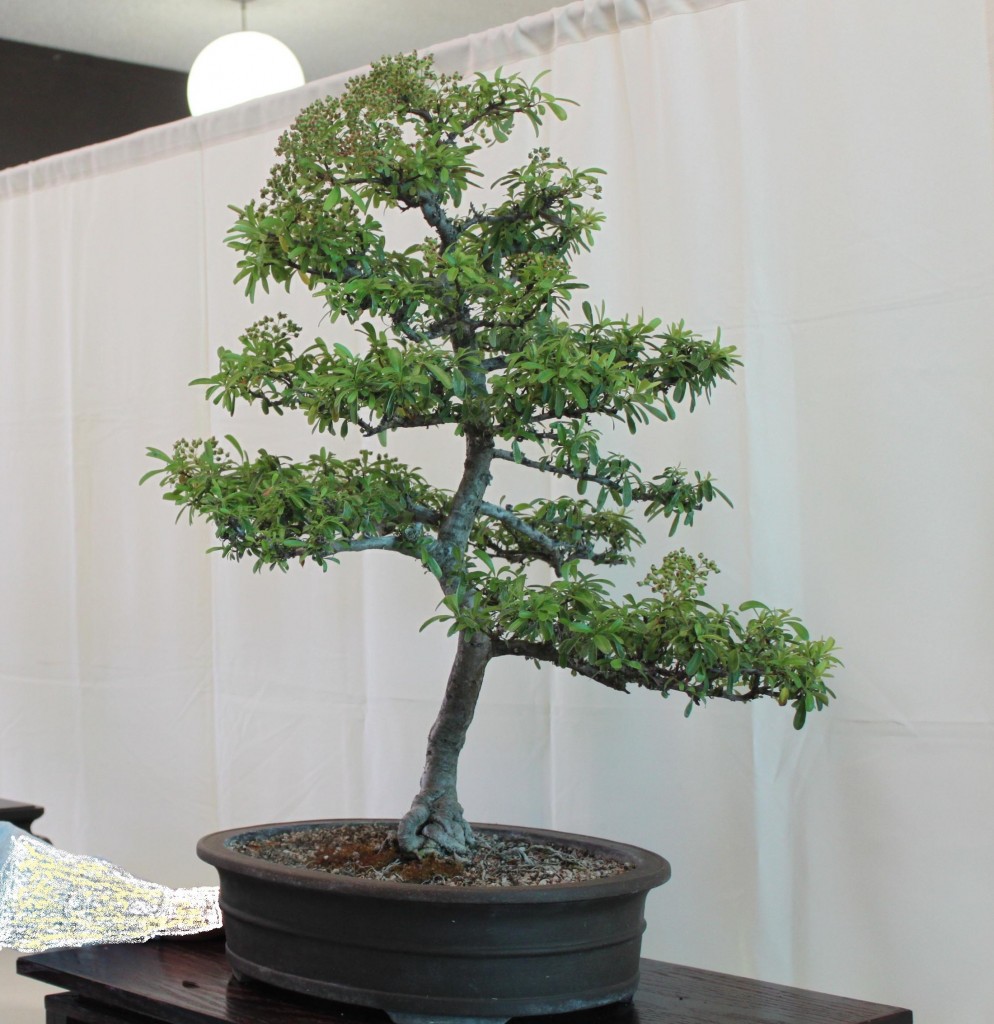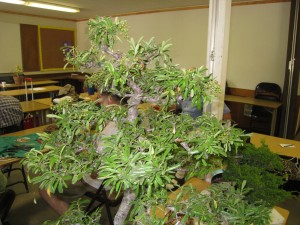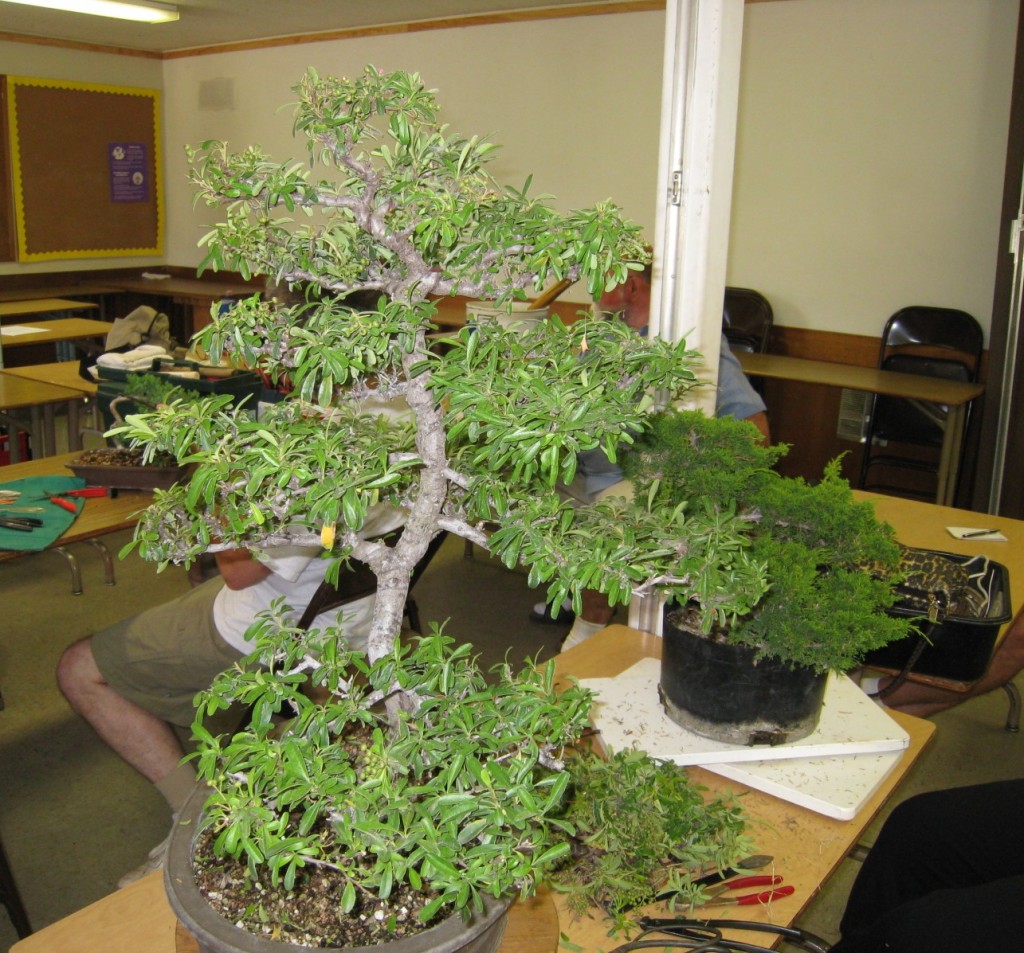Pyracantha Bonsai
Pyracantha Bonsai
The Pyracantha makes an interesting, and showy bonsai. In the spring, it puts forth sprays of white flowers. Then the berries appear, and in the fall, they turn brilliant orange. Most varieties feature small leaves and compact growth, lending themselves well to bonsai.
Background:
Pyracantha is a genus of seven species of shrub, mostly native to Asia, although one variety, Pyracantha Coccinea, ranges as far west as Asia Minor and Italy. Pyracanthas are a broadleaf evergreen, featuring dense thorny growth. They can grow as tall as eighteen feet. They are grown by landscapers as hedges and ornamental plants, and are valued for their shows of white flowers in the spring, and red or orange berries in the fall. Their typical growth cycle is to flower in mid spring, then produce long, aggressive shoots of vegetative growth. The berries form on the flower stems, and ripen in the fall.
Where to Get One:
Most landscape nurseries in the temperate regions of the world will carry some variety of Pyracantha. Although they are prized as bonsai for their flowers and fruit, few bonsai nurseries carry specimens. Seeds easily germinate, so if you cannot find one in a nursery, collecting berries from a mature specimen is a worthwhile pursuit. While collecting large specimens from the wild is not possible outside Asia, the Pyracantha has been used widely enough in landscaping that large specimens are often collected from old hedges and landscapes.
What To Do When You Get It:
Growth rate varies with the cultivar. Most small leaved varieties are slow growing, while the larger leaf varieties tend to grow faster. If you want a thick trunk, you will need to plant your Pyracantha in a tub or in a prepared growing bed in the ground. They grow slowly once placed in a bonsai pot.
Soil and Watering:
Pyracanthas like loose, free draining soil, but they also need a fair amount of organic matter in order to properly support flower and fruit production. This can be provided as a component of the soil, or as fertilizer on top of the soil if the grower uses a soil made up of 100% aggregate or inorganic matter. The author’s preferred mixture is 40% potting soil (made up of composted bark) and 60% aggregate, made up of equal parts decomposed granite, pumice, and builder’s sand.
Potting:
Pyracanthas should be potted in early spring, before they start to flower. They like a certain amount of moisture, and wilt easily in hot weather if sufficient moisture is not provided. For this reason, a Pyracantha bonsai should be potted in a fairly large and deep pot.
Pruning and Styling:
Pyracanthas can be shaped into almost any bonsai style. They even look good as cascades. They respond well to wiring, but the finer branches get brittle as they get older. The preferred method is to wire out the current year’s shoots while they are pliable, and remove the wire when they lignify. Be careful attempting to bend larger and thicker branches. Because Pyracanthas are hedge material, they are also easily trained by the clip and grow method, and once branch structure and foliage pads are developed, they are easy to maintain.
Pests are Diseases:
Pyracanthas sound perfect for bonsai, don’t they? There is always a catch. Aphids love this plant. Every spring, without fail, when the new leaf growth starts, you will find the ends of the new growth festooned with aphids, so keep your favorite insecticide handy. Spraying these plants every spring is just part of the routine. However, aphids are just a nuisance. The real threat is a nasty fungus called Fire Blight. Fire Blight is transmitted by a variety of sap sucking leaf hopper, and once a Pyracantha has Fire Blight, there is no cure. For this reason, Pyracanthas are far less popular as landscape plants than they once were. Since the disease is only transmitted from one Pyracantha to another, if you have a Pyracantha bonsai and there are no other Pyracanthas nearby, it is in little to no danger.
Closing Remarks:
Of the many broadleaf shrubs that can be used for bonsai, Pyracantha puts on one of the best shows. Its sprays of white flowers rival even the Azalea in the spring, and the orange fruit in the autumn are an added bonus. A well styled Pyracantha bonsai is a joy to behold.




